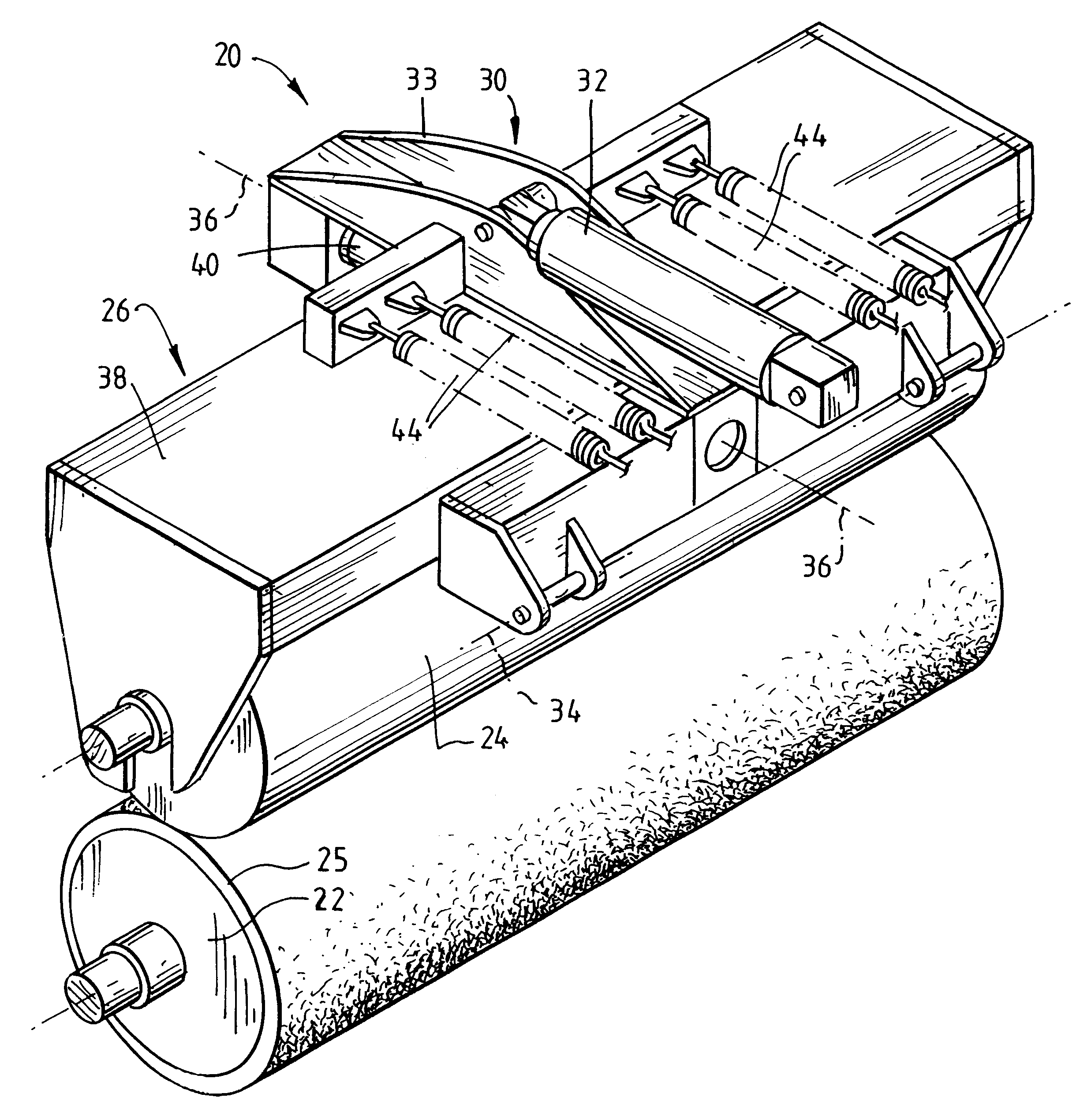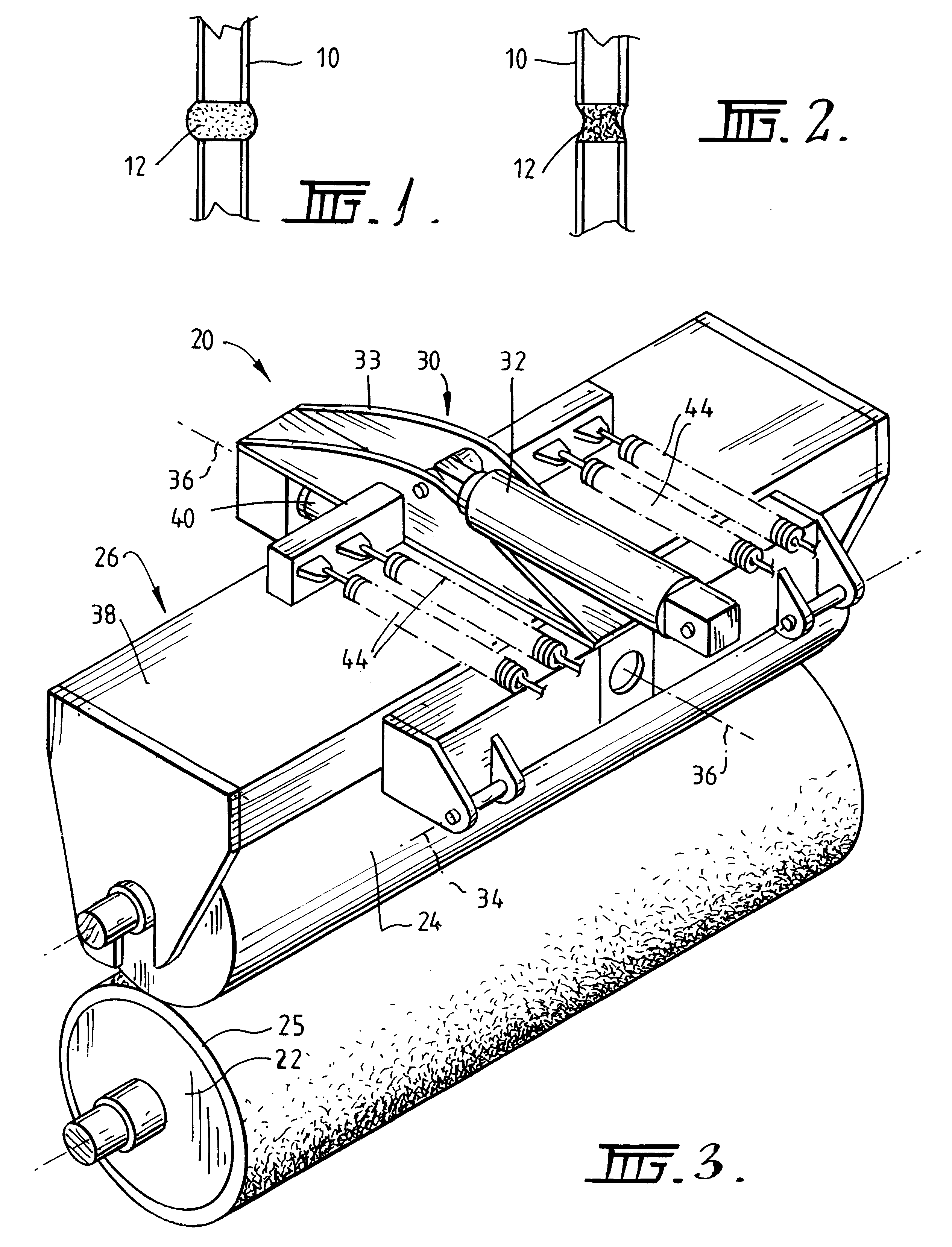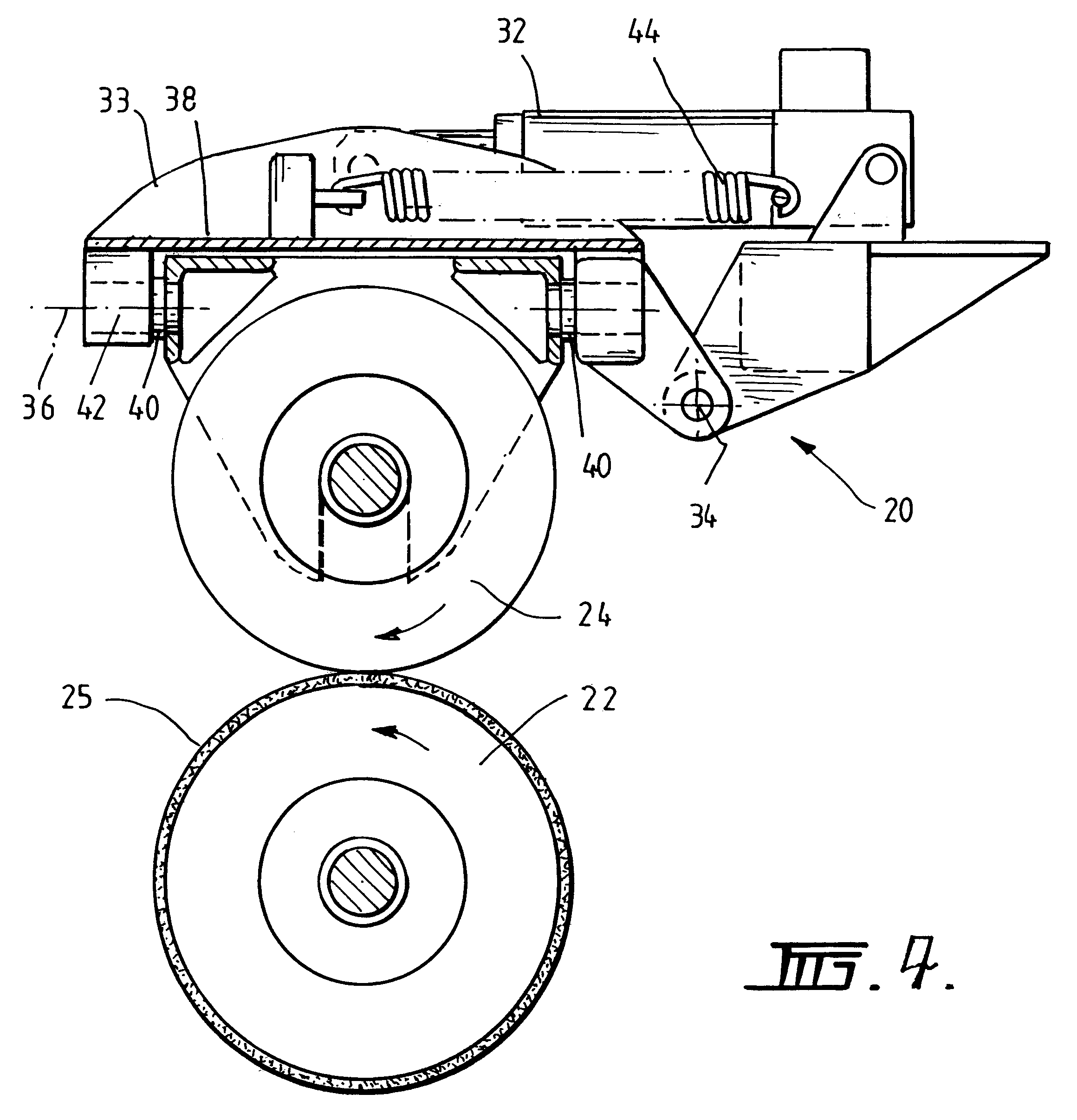Hay conditioning apparatus
a technology for conditioning apparatus and hay, which is applied in the direction of crop conditioners, presses, rotary presses, etc., can solve the problems of destroying the quality of hay, making many thousands of tonnes of hay worthless, and the hay is the most vulnerable to damag
- Summary
- Abstract
- Description
- Claims
- Application Information
AI Technical Summary
Problems solved by technology
Method used
Image
Examples
Embodiment Construction
All grasses and cereals and some other plants used for animal fodder have nodes in their stem. FIG. 1 is an enlargement of a typical plant stem 10 having a node (joint / knuckle) 12 which is still green. The stem 10 is generally hollow and easily split or cracked open, whereas the nodes 12 are less compressible and are typically filled with a matrix of fine honeycomb type cellulose material. As the node 12 dries it shrinks in volume as illustrated in FIG. 2.
A preferred embodiment of the hay conditioning apparatus 20 in accordance with the present invention is illustrated in FIGS. 3, 4 and 5. The apparatus 20 comprises a first roller 22 which is rotatably mounted in a fixed mounting, and a second counter-rotating roller 24 which is rotatably mounted in connection with a moveable mounting 26. The second roller 24 is in rolling contact with the first roller 22 and is adapted to receive pre-cut hay therebetween for conditioning. The moveable mounting 26 allows the second roller 24 to be d...
PUM
 Login to View More
Login to View More Abstract
Description
Claims
Application Information
 Login to View More
Login to View More - Generate Ideas
- Intellectual Property
- Life Sciences
- Materials
- Tech Scout
- Unparalleled Data Quality
- Higher Quality Content
- 60% Fewer Hallucinations
Browse by: Latest US Patents, China's latest patents, Technical Efficacy Thesaurus, Application Domain, Technology Topic, Popular Technical Reports.
© 2025 PatSnap. All rights reserved.Legal|Privacy policy|Modern Slavery Act Transparency Statement|Sitemap|About US| Contact US: help@patsnap.com



